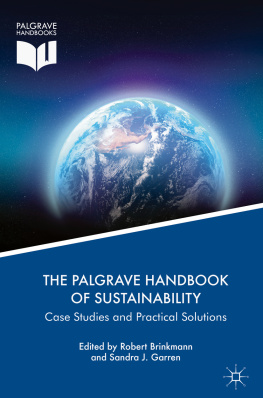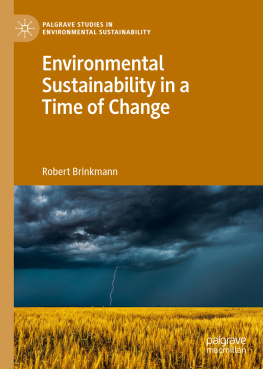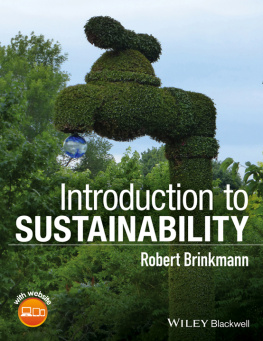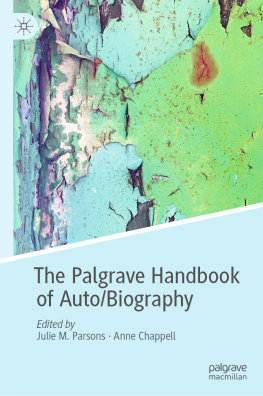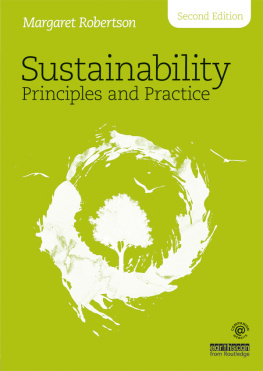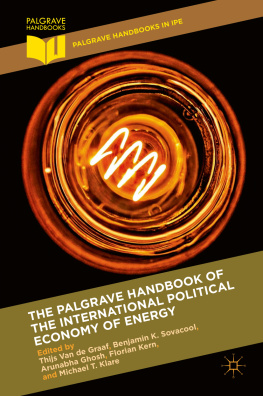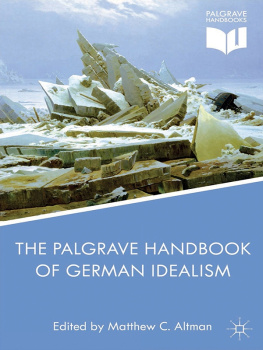Robert Brinkmann - The Palgrave Handbook of Sustainability: Case Studies and Practical Solutions
Here you can read online Robert Brinkmann - The Palgrave Handbook of Sustainability: Case Studies and Practical Solutions full text of the book (entire story) in english for free. Download pdf and epub, get meaning, cover and reviews about this ebook. year: 2019, publisher: Springer International Publishing, genre: Politics. Description of the work, (preface) as well as reviews are available. Best literature library LitArk.com created for fans of good reading and offers a wide selection of genres:
Romance novel
Science fiction
Adventure
Detective
Science
History
Home and family
Prose
Art
Politics
Computer
Non-fiction
Religion
Business
Children
Humor
Choose a favorite category and find really read worthwhile books. Enjoy immersion in the world of imagination, feel the emotions of the characters or learn something new for yourself, make an fascinating discovery.
- Book:The Palgrave Handbook of Sustainability: Case Studies and Practical Solutions
- Author:
- Publisher:Springer International Publishing
- Genre:
- Year:2019
- Rating:5 / 5
- Favourites:Add to favourites
- Your mark:
- 100
- 1
- 2
- 3
- 4
- 5
The Palgrave Handbook of Sustainability: Case Studies and Practical Solutions: summary, description and annotation
We offer to read an annotation, description, summary or preface (depends on what the author of the book "The Palgrave Handbook of Sustainability: Case Studies and Practical Solutions" wrote himself). If you haven't found the necessary information about the book — write in the comments, we will try to find it.
The Palgrave Handbook of Sustainability: Case Studies and Practical Solutions — read online for free the complete book (whole text) full work
Below is the text of the book, divided by pages. System saving the place of the last page read, allows you to conveniently read the book "The Palgrave Handbook of Sustainability: Case Studies and Practical Solutions" online for free, without having to search again every time where you left off. Put a bookmark, and you can go to the page where you finished reading at any time.
Font size:
Interval:
Bookmark:
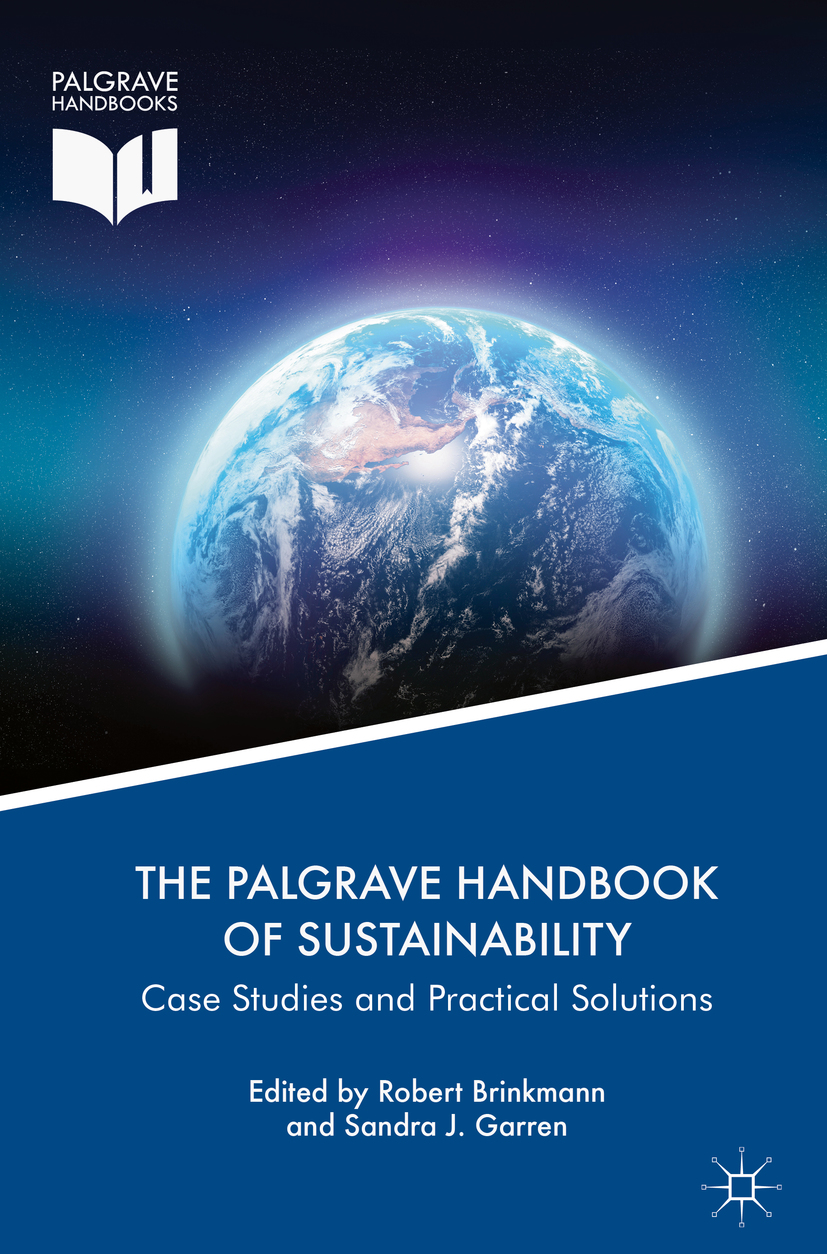

Cover illustration: Yuri_Arcurs/gettyimages
This Palgrave Macmillan imprint is published by the registered company Springer International Publishing AG part of Springer Nature.
The registered company address is: Gewerbestrasse 11, 6330 Cham, Switzerland
This book is dedicated to everyone who tries to make the world a better place through sustainability efforts in their home, their community, their nation, and the world .
The idea for this book emerged from conversations we had years ago when we saw that there was a need for greater information about practical and real-world examples of sustainability efforts from around the world. We were inspired by people like Wangari Maathai who worked hard in her own community yet stirred the world to think about local and global sustainability connections. It was our goal to showcase how people around the world were finding ways to come to terms with their sustainability challenges to not only inspire us but to teach us. We believe we have accomplished this goal. We hope the book will be of interest to anyone who wants to learn about ways that sustainability is addressed throughout the world.
The book was also inspired by our students. We have been teaching in the environmental field for many years, and we have found that students are motivated to get engaged in the field of sustainability if they can learn about real-world situations. As a result, each chapter of this book not only has significant background about a particular sustainability topic, it also has a case study to provide context for the issue at hand.
While defining sustainability can be problematic, we took a traditional approach in framing sustainability within the venerable three Es of the field: environment, equity, and economy. The first three parts of the book are roughly divided into these three areas. But we also attempted to obtain distinct regional examples of sustainability initiatives from around the world that can be framed more holistically. These examples make up the final part of the book. We tried to be comprehensive in scope throughout all four parts. However, any attempt to be comprehensive in a book like this will be flawed at the end. It is just impossible to capture all areas of sustainability in a time like this. The field and the world is just too vast. Please forgive any omissions in content. Because sustainability is a holistic field, many chapters cover themes that might fit in other sections of the book. We know our readers are sophisticated consumers of sustainability information and will understand the challenges inherent in trying to divide sustainability content into comprehensive sections.
Our work on the book, and the work of many of the authors, was informed by the tumultuous times in which we live. We started working with contributing authors on their pieces in 2016 around the time of the Brexit vote and the subsequent elections that resulted in the US presidency of Donald Trump. As we write this preface in late 2017, throughout the world, there is great concern about the future of sustainability initiatives and even greater concern about the future of our planet in general, given the saber rattling of nuclear powers. While some people live in places where sustainability is about technological innovation, many others live in places where sustainability is about trying to find clean water and safety. We believe that the examples in this book are extremely important at this unique moment of time in our collective history. They not only give us a way forward, but they also give us faith that we can work together to solve significant problems.
Putting together such a big book came with some challenges. We worked with dozens of authors from around the world. We are so grateful for their contributions. Their efforts to make the world a better place motivated us. We are lucky to have so many outstanding authors as contributors. Unfortunately, some of the authors had health, family, or professional challenges and had to drop out of the project. While we regret not being able to publish their work, it was wonderful to get to know them. We were truly humbled by the work of so many people in very different settings.
Perhaps one of the biggest challenges we had in developing this book was how to make this work speak to a global audience. Each case study is on a different topic and in a different setting. How do these pieces work together? As the chapters came in, we found that while sustainability infused all the writing, what really brought the work together is the process and the people. All over the world, individuals and communities are joining to work on important issues that have real implications for the survivability of the planet and the quality of life for future generations. The people involved with the case studies in the chapters represent just a small number trying to make the world a better place. The chapters not only inform us how to do sustainability, they also give us hope.
We would like to thank the authors of the individual chapters who contributed to this volume. In addition, the support of our family and friends is deeply appreciatedespecially Mario Gomez and Rachel Kling. We would also like to thank our students who helped with many aspects of this book: Keshanti Nandlall, Lauren DOrsa, and Mathew Huxel. Finally, we are grateful to the terrific editorial team at Palgrave. Rachael Ballard has been a constant support as we developed this book.
Font size:
Interval:
Bookmark:
Similar books «The Palgrave Handbook of Sustainability: Case Studies and Practical Solutions»
Look at similar books to The Palgrave Handbook of Sustainability: Case Studies and Practical Solutions. We have selected literature similar in name and meaning in the hope of providing readers with more options to find new, interesting, not yet read works.
Discussion, reviews of the book The Palgrave Handbook of Sustainability: Case Studies and Practical Solutions and just readers' own opinions. Leave your comments, write what you think about the work, its meaning or the main characters. Specify what exactly you liked and what you didn't like, and why you think so.

